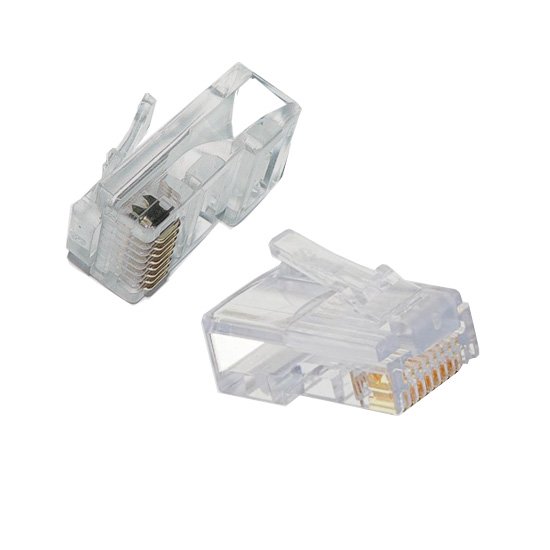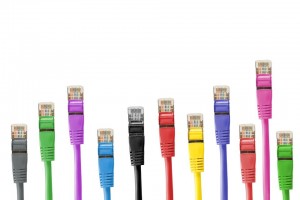
An Overview of RJ45 Connectors
The eight-pin RJ45 connector is a standardised interface which often connects a computer to a Local Area Network (LAN). This type of connector was originally developed for telephone communications but is now used in a range of applications. The abbreviation, RJ45, stands for Registered Jack-45. Registered Jack specifications are related to the wiring patterns of the jacks, rather than their physical characteristics. The term RJ45 has also come to refer to a range of connectors for Ethernet jacks. An 8 Position/8 Contact connector, called an 8P8C, is a modular connector for telecommunication cables. It is also informally referred to as an RJ45.
RJ45 Cable for Ethernet Connections
Ethernet cables come with RJ45 connectors on both ends. Because of this, an Ethernet cable is sometimes designated as an RJ45 cable. These cables are often used to connect computers onto Ethernet networks. The RJ45 connector resembles a six-pin RJ11 connector, though the 45 is slightly wider. Since each connector has eight pins, an RJ45 Ethernet cable will have eight wires of varying colours. RJ45 cables can be wired according to two different schemes, T-568 A or B, depending upon the devices to be connected within the network. Crossover patch cables have different wiring schemes on each end to support computer-to-computer connections.

RJ45 Connectors Support Professional Computer Networks
High-speed modem and other computer network applications are supported by RJ45 connectors. An RJ45 patch lead comes with this registered jack connection. Both booted and unbooted RJ45 patch leads serve as useful connectors within various types of business communications systems.

RJ45 Cat5e & Cat6 Connectors & Adapters have been manufactured to high quality specifications and are cheaply priced so that networking costs are kept to a minimum. We also offer other Ethernet and UTP cable components. These items include RJ45 Crimp Plugs & Boots, RJ45 Patch Lead Locking Devices, Accessories and UTP Shuttered Modules available in LJ6C Sizing.
Call us FREE on 0800 488 0000 with connection questions.
